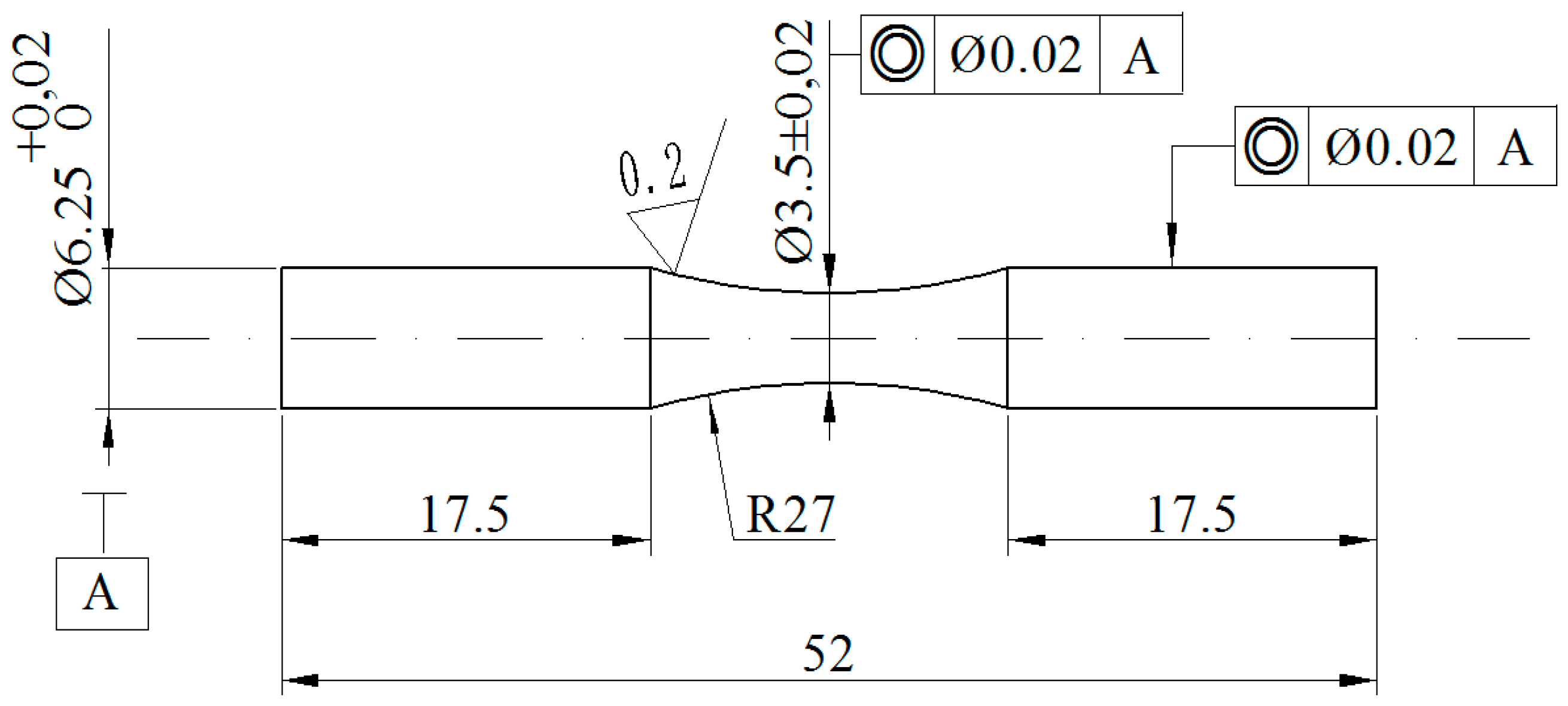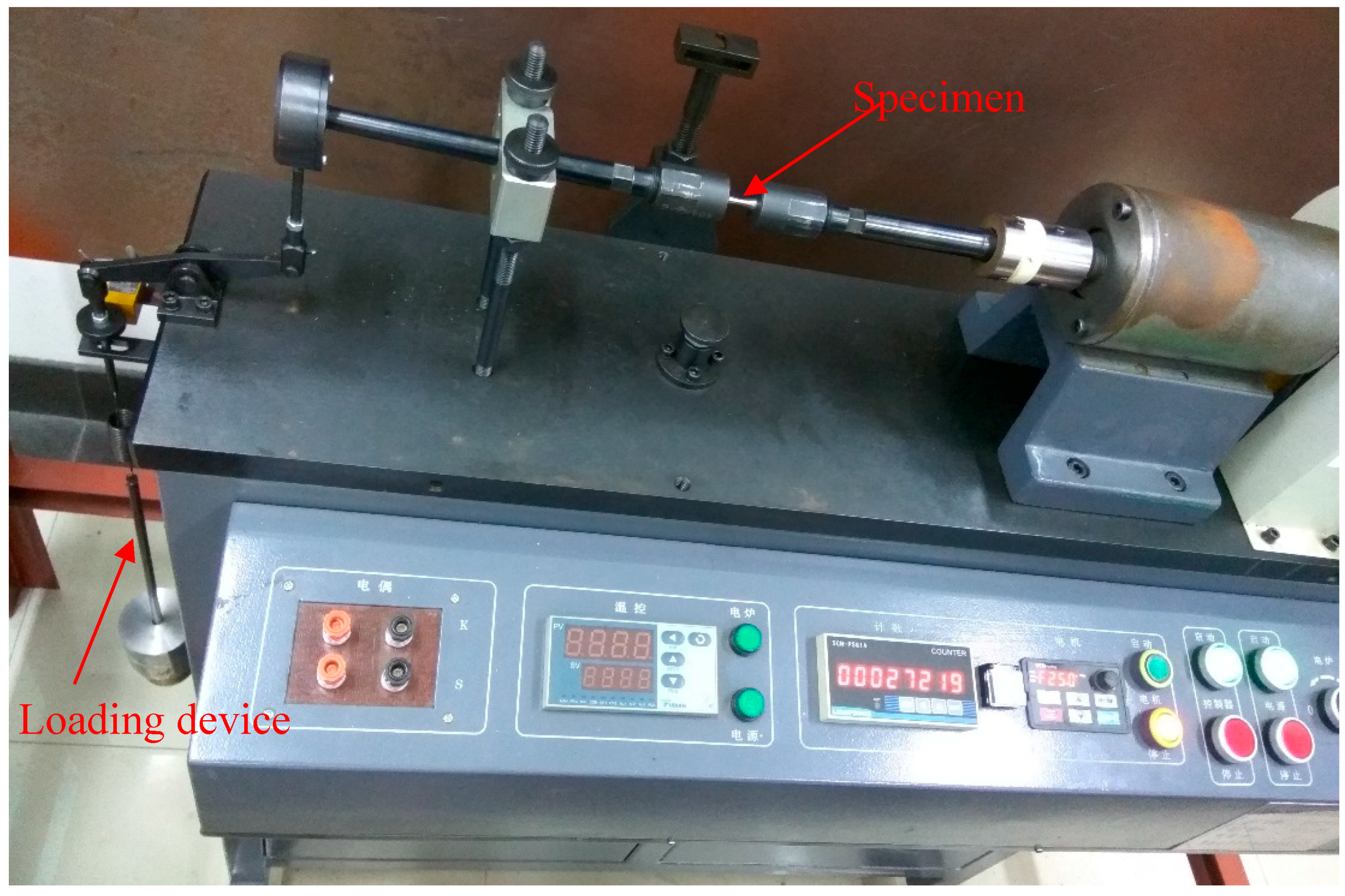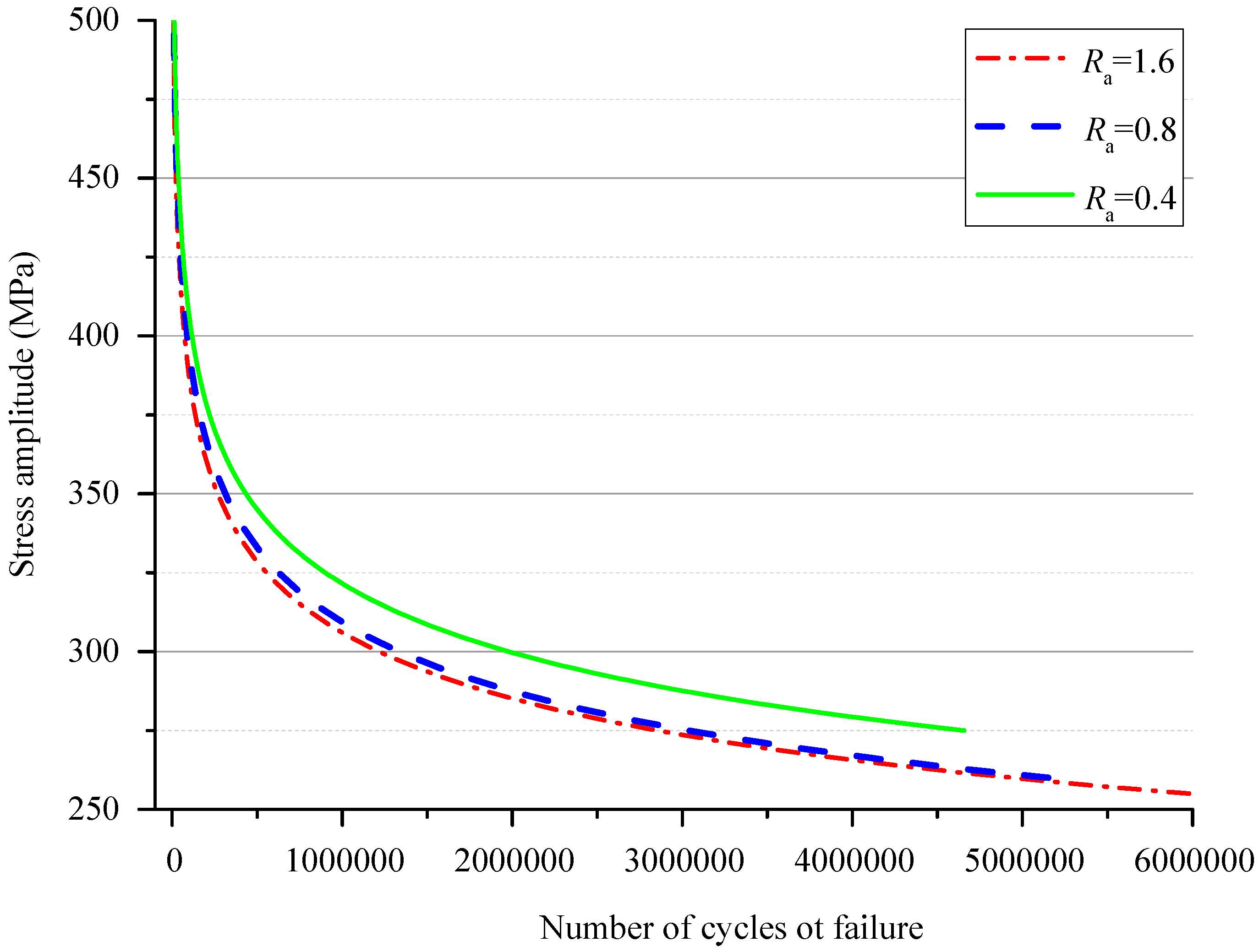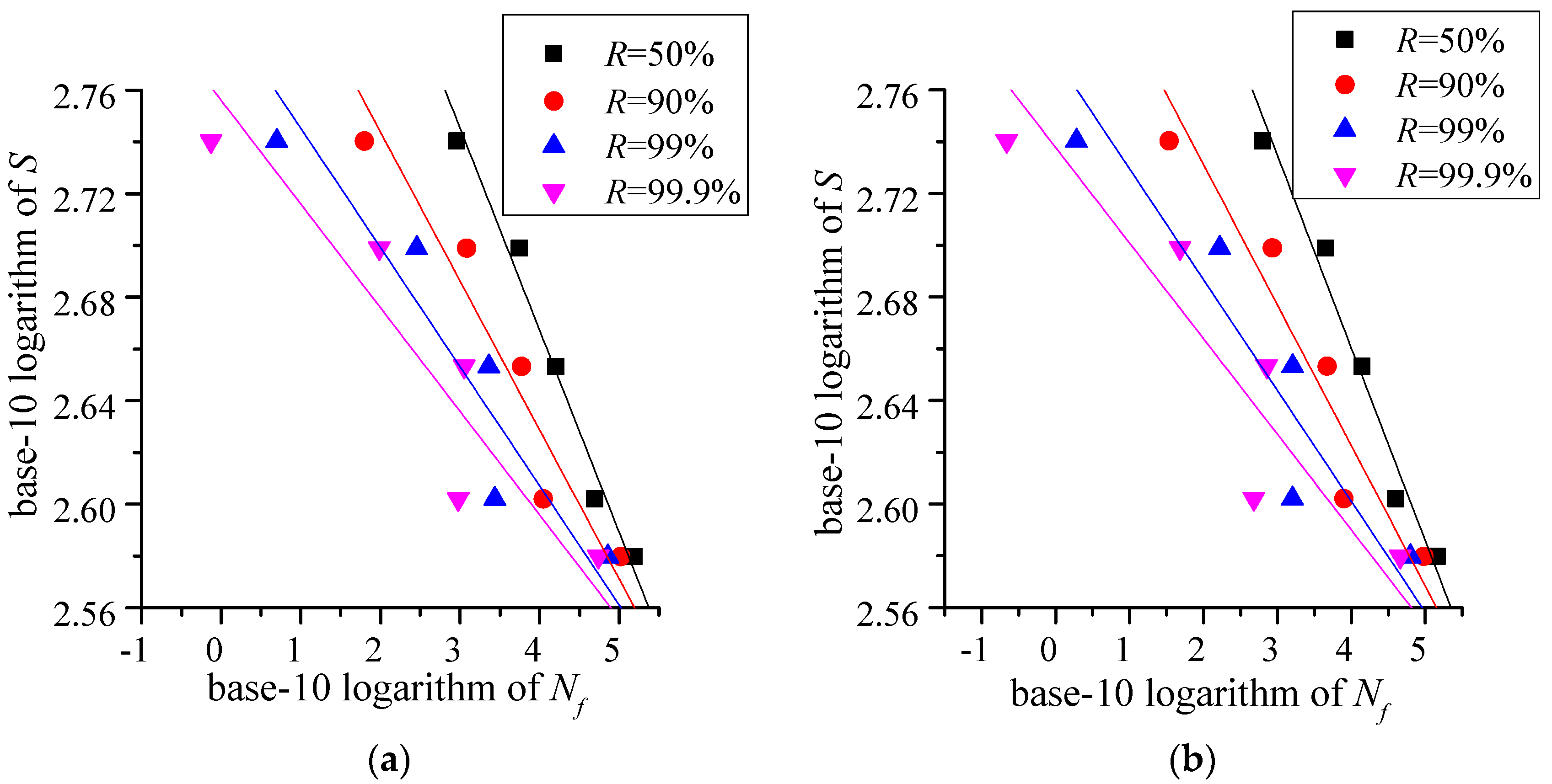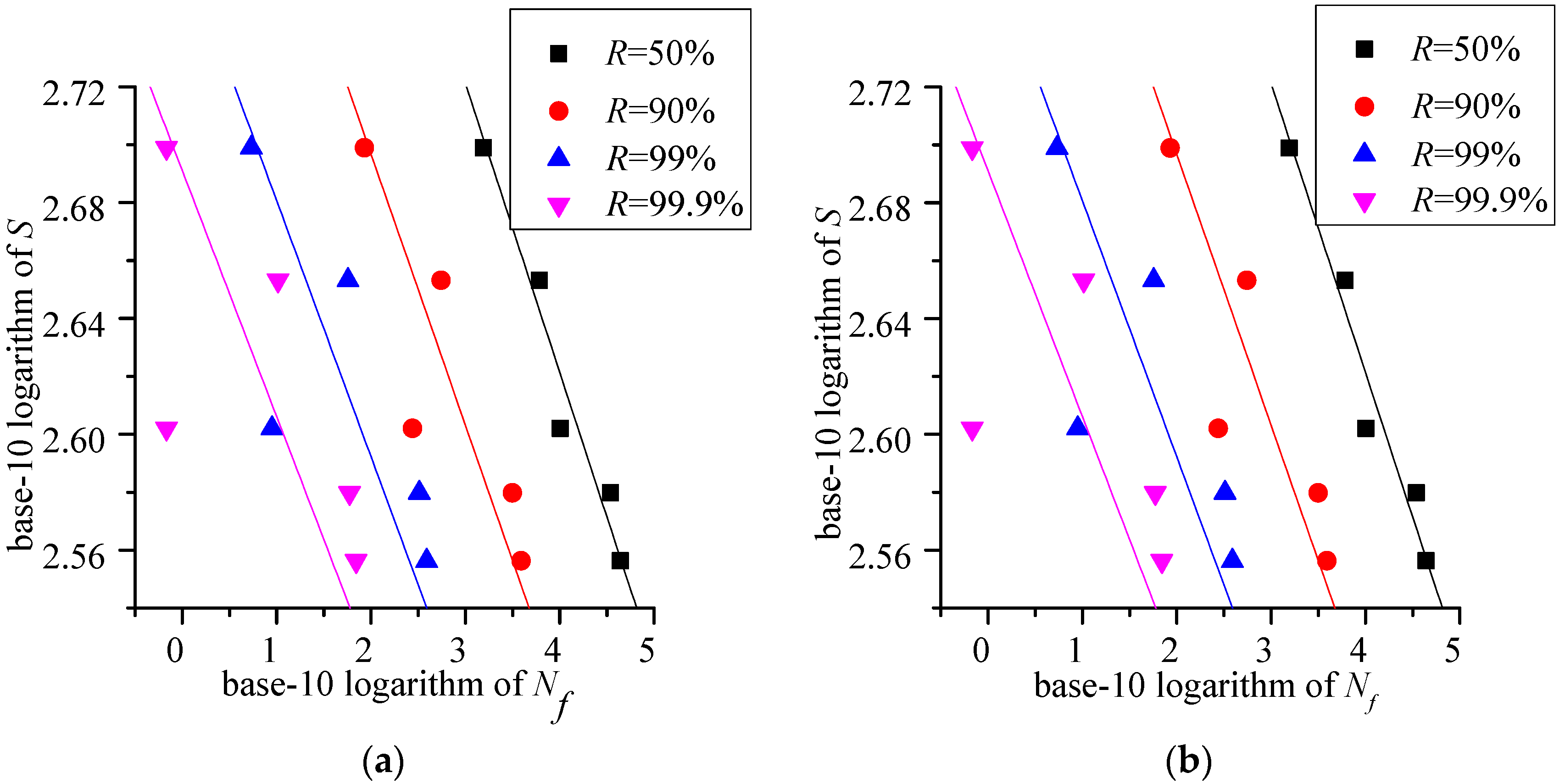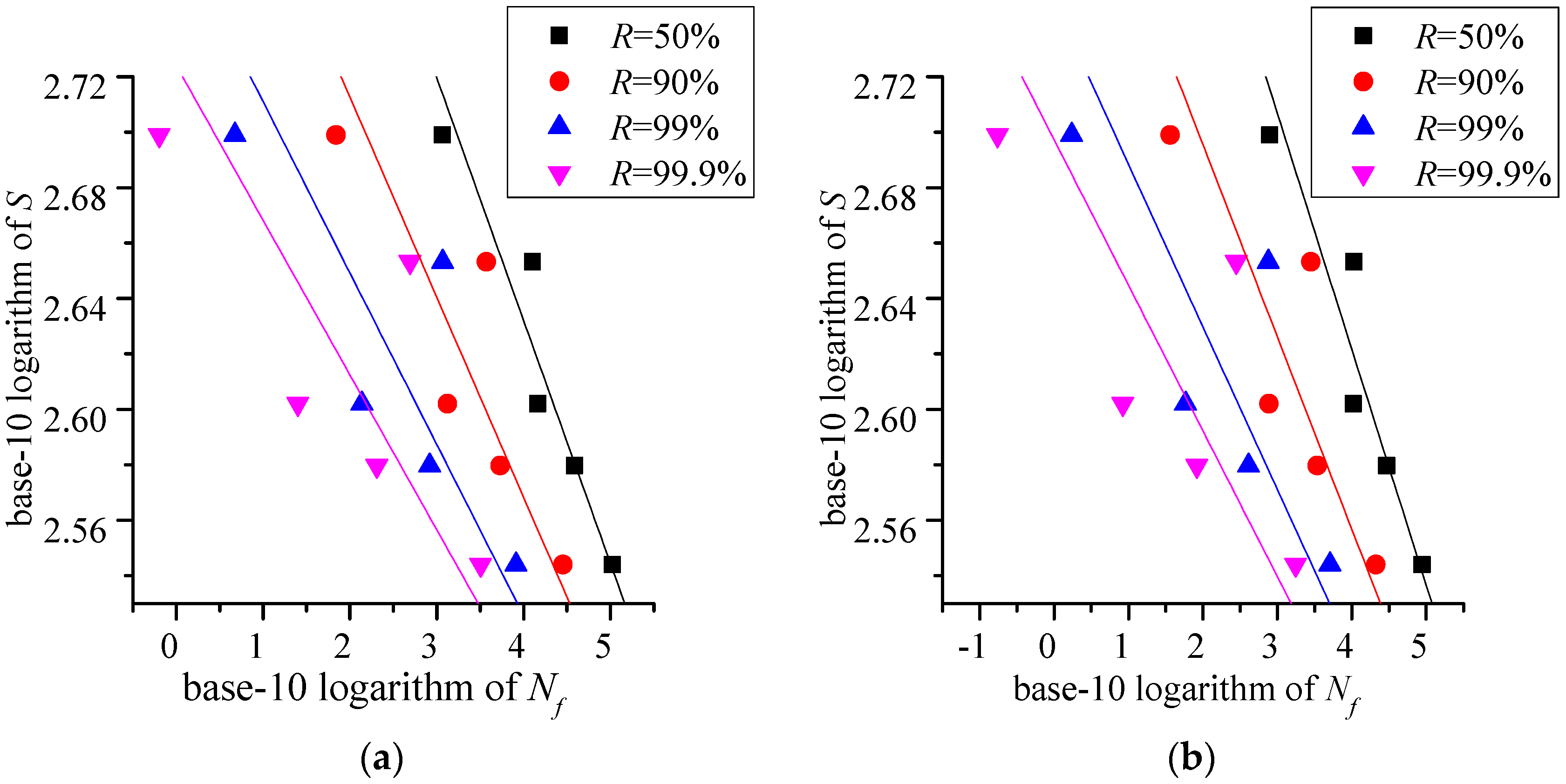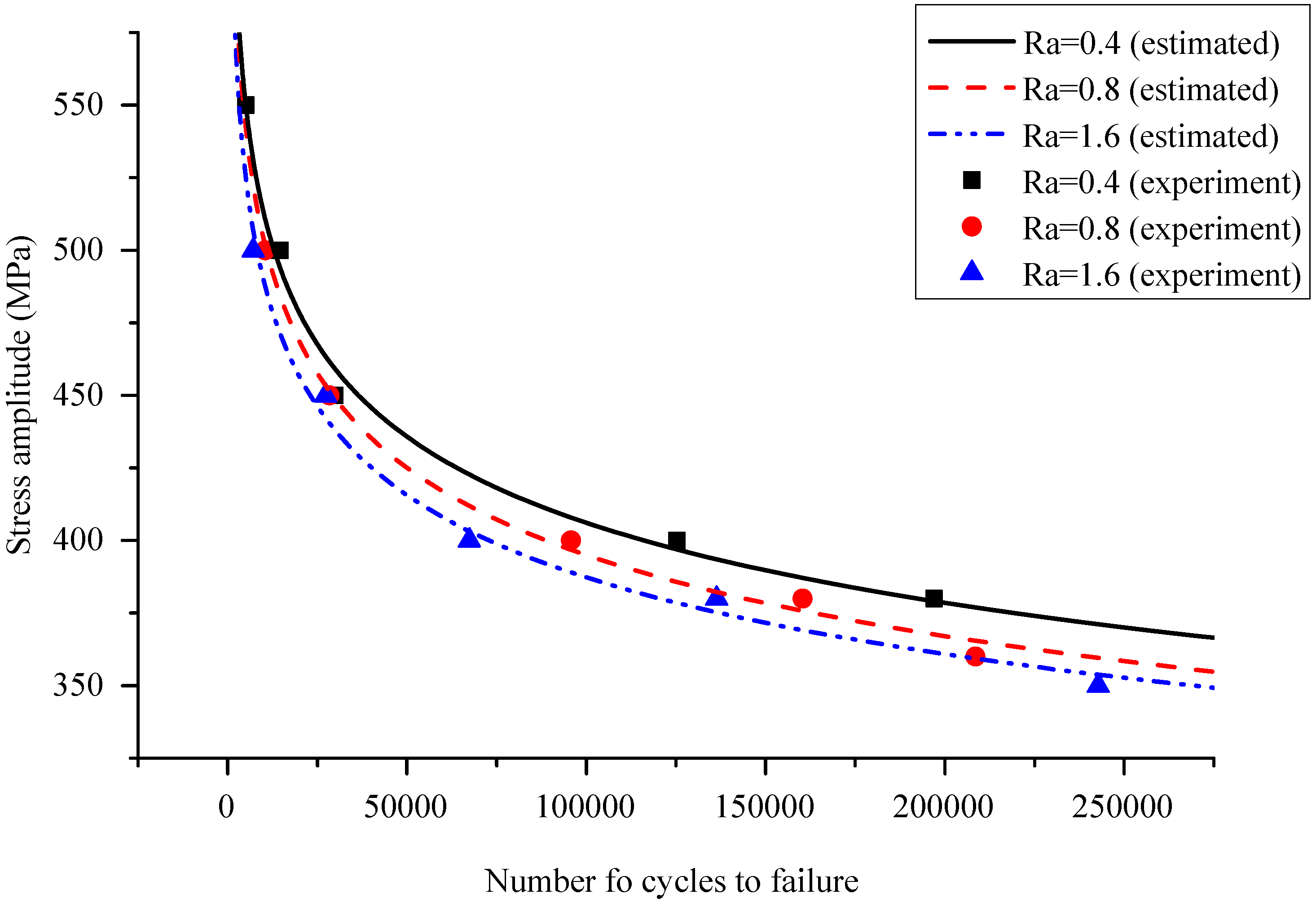Medium-carbon steel is usually referred to as the carbon steel that contains approximately 0.30–0.60% carbon content. It balances ductility and strength, and has good wear resistance [
1]. It is commonly used for rails, wire ropes, tire cord, cold heading, forging steels, cold finished steel bars, machinable steel, and so on [
2]. Its fatigue behavior analysis and fatigue life estimation play an important role in the safety and reliability in the machinery industry. From a raw steel piece to a part meeting the design requirements, a manufacturing process must be used. The surface roughness of a part as a result of the manufacturing process plays a major role in determining the fatigue behavior of the part [
3]. To ensure the high safety and reliability of the part of medium-carbon steel in service, it is important to investigate S-N curve, P-S-N curve, and fatigue life of medium-carbon steel with different surface roughness.
A method has been reported where the effect of the surface roughness on fatigue behavior was commonly considered by using surface condition modification factor, which was:
where
Sut was the minimum tensile strength,
b1 and
b2 are statistical values and determined by the material and the machining method such as ground, machined or cold-drawn, hot-rolled, and as-forged [
4]. Then, the endurance limit
Se at the critical location of a machine part in the geometry and condition of use is proportional to the product of
and
:
where
is the rotary-beam test specimen endurance limit. However, it is very difficult for this method to estimate the fatigue life of the given material with the different surface roughness. Other methods have also been proposed. For example, the surface groove due to the manufacturing process was considered to result in stress concentration similar to a notch. The fatigue stress concentration factor
Kf was used for describing the effect of the surface roughness on the fatigue limit. It was the function of the stress concentration factor
Kt which can be estimated by the finite element method [
5,
6] or the empirical formula including the average geometric parameters of surface roughness [
7,
8]. A method has been also reported to estimate the fatigue life by:
where
Nf,
Ni, and
Np were fatigue life (the number of cycles to failure), crack initiation life, and crack propagation life, respectively. The fatigue life can be computed as:
where
and
are determined by plotting
Ni as a function of the stress amplitude
S. The crack propagation life could be estimated by iterative numerical integration of Paris’ law where the surface fatigue crack propagation threshold is multiplied by
Kt and the fatigue crack propagation threshold in depth is not affected [
5]. For the large surface roughness, the stress concentration due to the surface groove might be obvious and the methods of estimating the fatigue life based on the stress concentration factor might have high accuracy. However, the stress concentration factor might be very close to 1 for small surface roughness. Moreover, accurately computing the stress concentration factor is a time-consuming and complex process. Therefore, the method has been reported where the surface groove due to machining was considered to be an initial micro-defect. The analytic formulation of the crack initiation life
Ni can be estimated based on the dislocation dipole accumulation model [
9,
10,
11] and the crack propagation life
Np can calculated using the analytic solution of Paris’ law integral [
12,
13,
14]. Since the reported method has been validated by six types of ultra-high strength steel [
11] and high-strength martensitic stainless steel [
12], it will be employed to estimate the fatigue life of medium-carbon steel with the different surface roughness in this paper.
The remainder of this paper is organized as follows: In
Section 2, the material, the specimen geometry, and the testing apparatus will be described, the scatterplot of the fatigue experiment results shown, and the mean fatigue life of the specimens with different average surface roughness contrasted. In
Section 3, S-N and P-S-N curves will be established and their curve-fitting parameters listed. In
Section 4, the formulation for estimating the mean fatigue life of medium-carbon steel with different average surface roughness will be explained along with its validation. The conclusions are, finally, drawn in
Section 5.
